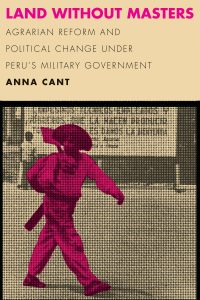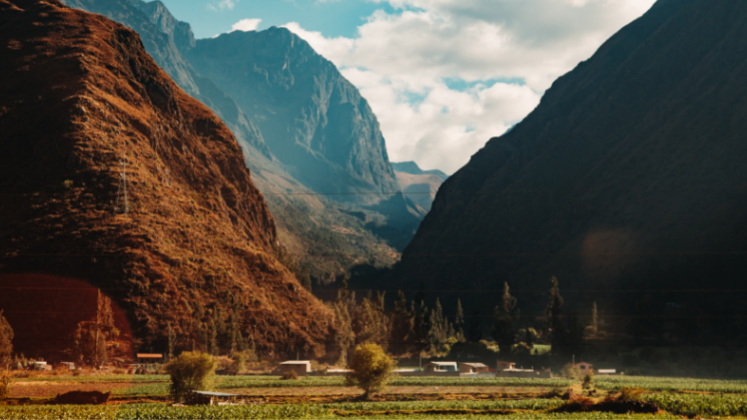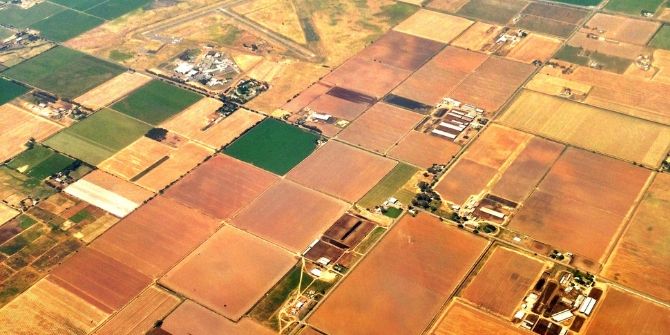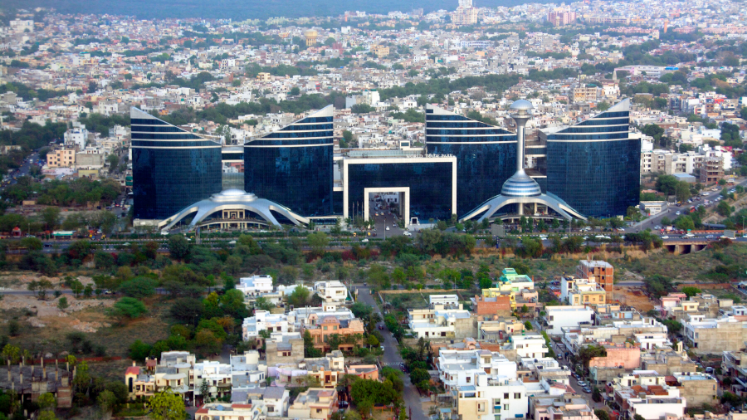In Land Without Masters: Agrarian Reform and Political Change Under Peru’s Military Government, Anna Cant explores the continuing impact of Peru’s 1969 land reforms under the military government of General Juan Velasco Alvarado. This book offers a timely history of agrarian politics and military governance during the Velasco era, tackling the complexity of state-led development head-on, writes Camden Paillot.
Land Without Masters: Agrarian Reform and Political Change Under Peru’s Military Government. Anna Cant. University of Texas Press. 2021.
 Find this book (affiliate link):
Find this book (affiliate link):![]()
In Latin American history, land reform represents not only the opportunity to depart from neo-feudal relations of exploitation, but also the chance to envision a new, even revolutionary, society. In Peru, the land reforms under the Velasco military government are one such case, in which reform was not simply a matter of agrarian policy, but fundamentally came to represent an all-encompassing ideological project for a ‘new’ Peru.
Land Without Masters by Anna Cant provides an innovative and ambitious longue durée of the 1969 land reforms under the military government of General Juan Velasco Alvarado, and how its success would rely on negotiating the complex interactions between national and local governments, institutions and local populations. Cant’s vivid synthesis of oral histories and historic archives reveals the often messy and deeply layered discourses that shape ‘on-the-ground’ politics and processes of land reform. Land Without Masters not only complicates traditional views of state-led development programmes of 1960s and 1970s Latin America, but also contributes to conversations surrounding the hidden politics of nation state-building and the nature of collective memory.
On 3 October 1968, General Juan Velasco Alvarado seized power of the Peruvian government and installed the Revolutionary Government of the Armed Forces. Preceded by political instability, his administration sought to build a modern Peru by departing from the colonial latifundio system, in which powerful landlords enjoyed nearly complete control over the countryside and its indigenous and mestizo inhabitants. General Velasco declared that his government’s 1969 agrarian land reforms represented a ‘new era’ in Peruvian history. In a sense, he was right: the restructuring of Peruvian society under the ambitious (yet brief) military government period created a new understanding of citizenship, political rights and the position of the state in social life that continues to play an important role to this day.
Yet, the massive reconstruction of agrarian relations (and indeed social relations as a whole) was easier said than done. Cant explains, ‘Given the deep historical roots of land inequality, the success of the government’s reform would depend on its ability to transform both property relations and social attitudes’ (36). Cant’s success in detailing this massive state-led campaign lies in three major components: her regional comparative approach; attentiveness to ideas of citizenship and nation state-building; and the competing politics of the land reform within collective memory.

Image Credit: Photo by Adrian Dascal on Unsplash
Cant’s focus on regional diversity paints a vivid portrait of the Peruvian state’s attempt to draw local regions into a broader national politics of change. To demonstrate the complexities of large-scale reform, Cant focuses on three geographically and socioeconomically different regions of Peru: the northern coastal regions of Piura, the central highlands of Cusco and the southernmost region of Tacna. Thus, Land Without Masters takes the shape of a comparative history, in which the successes of the National Social Mobilization Support System (SINAMOS), the land reform’s chief promotional organisation, relied on its ability to tread the heterogenous social and historical circumstances of each Peruvian region.
Cant’s comparative historical approach is well conceived and masterfully executed, standing out as unique even in comparison to similar investigations of Latin American nation-building. In contrast to monolithic histories of state-led development that simplify government action (and the process of statecraft as a whole), her attention to regional circumstances as chief factors in land reform undoes the mythology that the nation state tells itself: that broad ideas of citizenship and policy can be applied simply and evenly across all parts of the post-colonial state. Instead, Cant reveals the ways in which national attempts at reform had to attend to diverse geographical and cultural circumstances to truly be adopted at all levels of Peruvian society.
Similarly, Cant imagines the Peruvian land reforms as a fundamental project of nation-building. In 1969, mere months after seizing power, the Velasco government declared the end of the latifundio system. The immediacy and ambition of Le de Reforma Agraria (Land Reform Law) reveals that Velasco’s government saw land reform as a chief priority, envisioning it not just as a question of agricultural labour relations, but as an urgent and instrumental foundation on which to build the ‘modern’ Peruvian nation. Yet, the new Peru would require el hombre nuevo, the ‘new man’ (74), who would be forged in new ideas of citizenship and the massive efforts to improve literacy and education in rural areas. Whereas the campesino had previously been barred from the political process due to literacy laws, the new nation state (at least in the imagination of the Velasco government) would be built through mass suffrage and through the lettered — and thus politically fluent — new campesino citizen.
Cant successfully reveals how education efforts played a critical role in emphasising ideals of equality, political engagement and popular democracy that undergirded broader goals of land reform. Cant complicates these goals, and details that ‘the government’s educational interventions were marked by persistent tension between […] the dialogue and emancipation promoted by [Brazilian educator] Paulo Freire and the authoritarian and paternalistic expectations of a military-led administration’ (102). Her nuanced account of the state-led ideological project underpinning the struggle for land is important for any scholar of Latin America. Indeed, the state’s simultaneous view of the indigenous Quechua campesino as both a heroic protagonist in a broader national history and a disenfranchised object of sympathy for the urban middle class continues to shape political tensions to this day.
What discourses from the Velasco era lived on in memory and which perished? How does the nature of the collective memory of the 1969 land reform project shape modern Peruvian politics? In Land Without Master’s final discussion, Cant explores these pressing questions and successfully builds what Michel Foucault might call a ‘history of the present’. Foregrounded by a helpful theoretical discussion of how collective memory is formed and maintained, current memories are shown to be socially contingent on one’s community and on broader political developments, such as the insurrection by the guerilla group Shining Path and the Peruvian state’s dramatic shift towards neoliberalism in the last two decades of the twentieth century. Cant reveals how both reactionary and progressive political interests seek to exert control over the narrative in public memory. Land Without Masters reveals how, in the contemporary setting, the former group has relied on often racist tropes that frame Quechua communities as ‘children’ who have impeded the forward march of national Peruvian agriculture, whereas the latter group has sought to emphasise the multidimensional political importance of land reform as a people’s struggle for equality and self-determination.
Cant’s Land Without Masters provides an urgently needed and relevant history of agrarian politics and military government during the Velasco era. While illuminating the often-hidden logistics of large-scale land reform, Cant goes beyond policy to ultimately reveal how state practice and ideology interact to shape the idea of the nation itself. Clear and profound, Land Without Masters is an encouraging example of historiography that does not elide the hidden complexity of state-led development, but meets it head-on.
Note: This review gives the views of the author, and not the position of the LSE Review of Books blog, or of the London School of Economics and Political Science. The LSE RB blog may receive a small commission if you choose to make a purchase through the above Amazon affiliate link. This is entirely independent of the coverage of the book on LSE Review of Books.






